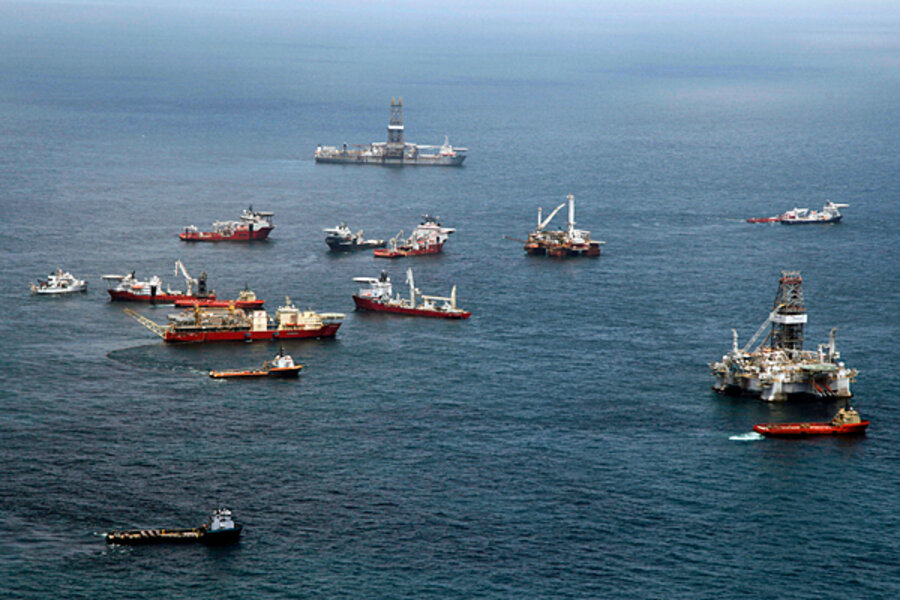Tropical storm Bonnie: A two-week delay in Gulf oil spill cleanup?
After dodging a bullet with hurricane Alex last month, BP and the Coast Guard now face a storm that threatens to veer dangerously close to the massive Gulf oil spill.
Tropical Depression 3 officially became tropical storm Bonnie Thursday night, part of an unusually active summer in the Gulf. Bonnie is currently about 400 miles southeast of Key Largo, Fla., near the Bahamas. But early storm tracks puts it on course to come close to Louisiana and the oil spill area by Sunday.
The unified spill command, headed by BP’s Bob Dudley and retired Coast Guard Adm. Thad Allen, have already begun to pull up stakes near the Deepwater Horizon site in anticipation of strong winds and high seas.
Skimmers can't operate during storm conditions and could be sent to shore. Work on the two relief wells has already been shut down in anticipation of a storm. If the storm escalates to a tropical storm and hits the site, the work stoppage could push back the completion of two relief wells by 10 to 14 days. They were on schedule to permanently kill the well by mid-August.
But that’s just one of three major concerns as the tropical depression threatens to become a full-blown tropical storm, even a hurricane.
What will happen to the well?
The most crucial decision faced by Allen, who has the last word on decisions in the Gulf, is what to do about the currently stoppered Macondo wellhead. A new containment cap system has held the oil flow at bay for more than a week and steadily building pressure inside the well means the integrity of the 13,000 foot long well bore appears to be holding up.
Lingering concerns about whether the building pressure could blow the well again, possibly worsening the scenario, seem to have been dispelled for now. Allen said Thursday that the well could be left closed indefinitely.
But the storm could delay an bid to seal the well more securely by pouring in heavy drilling mud and cement from the top – the so-called "static kill." Officials have said that "static kill" would not proceed until teams made further progress on the primary relief well – ensuring that "static kill" wouldn't hurt the relief wells.
The work stoppage on the relief wells will delay any decision about whether to go ahead with "static kill."
What to do about damaged booms
Hundreds of miles of boom laid to protect sensitive estuaries, passes, and beaches across the Gulf region are particularly susceptible to wave action, which can minimize their effectiveness as well as physically damage them.
During two previous storm surges, large sections of boom broke loose and washed up on beaches and were pushed into marshes, in some cases causing environmental damage, wrote US Coast Guard Rear Adm. Paul Zukunft in a letter to Gulf community leaders on Thursday.
To mitigate such events, the Coast Guard has set up four separate staging areas that will specifically work to repair and replace boom lost to a storm. But lost boom also means unprotected coastal areas, which are particularly vulnerable to oil-inundation during strong onshore winds from the south.
A toxic surge?
While large amounts of oil have come ashore in the past few months, the vast majority of the Gulf oil spill is still churning at sea, where oil-eating microbes are chomping at the spill and, in essence, neutralizing it by refining it down to its composite elemental parts.
A storm could change that dynamic in several ways. Firstly, a strong, even hurricane-strength, storm surge could force large parts of the slick onto shore and deep into marshes ill-equipped to handle multiple oilings. The worst-case scenario is oil-filled waters inundating beach or marsh communities, potentially leaving behind their toxic towns.
The churning of a storm can have beneficial effects, as well, by breaking the spill apart and making it easier for bacteria to degrade it.
Related:





